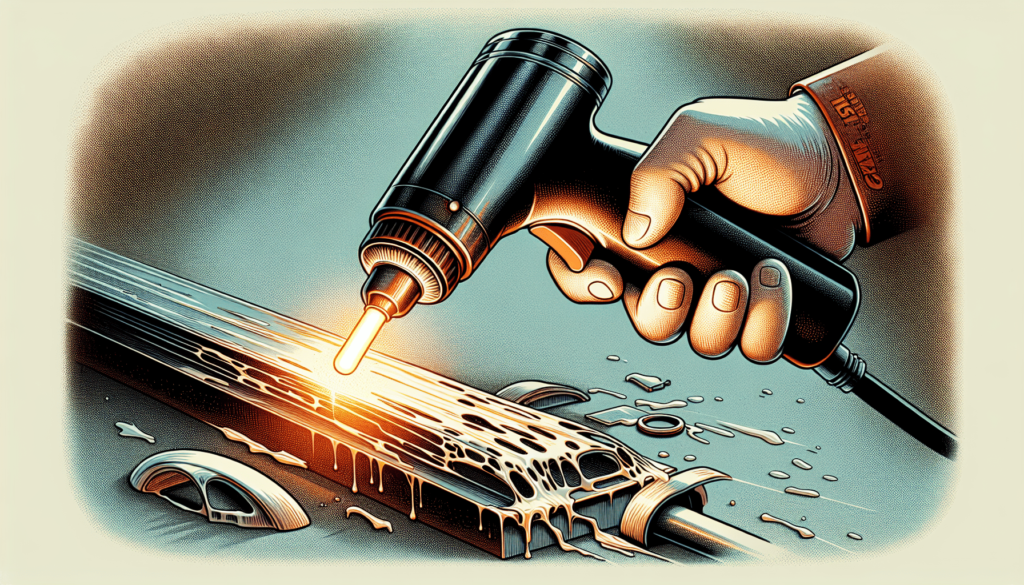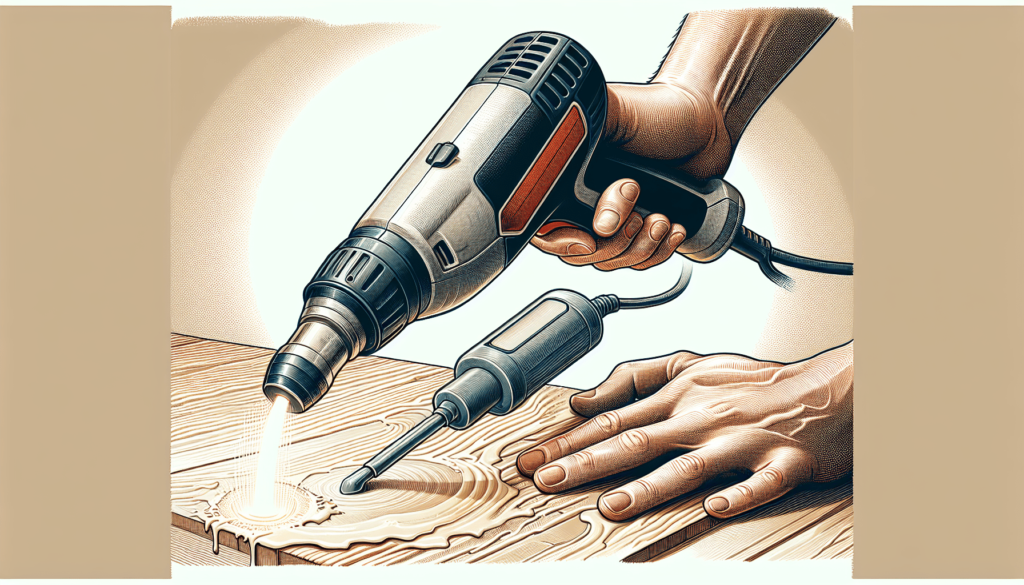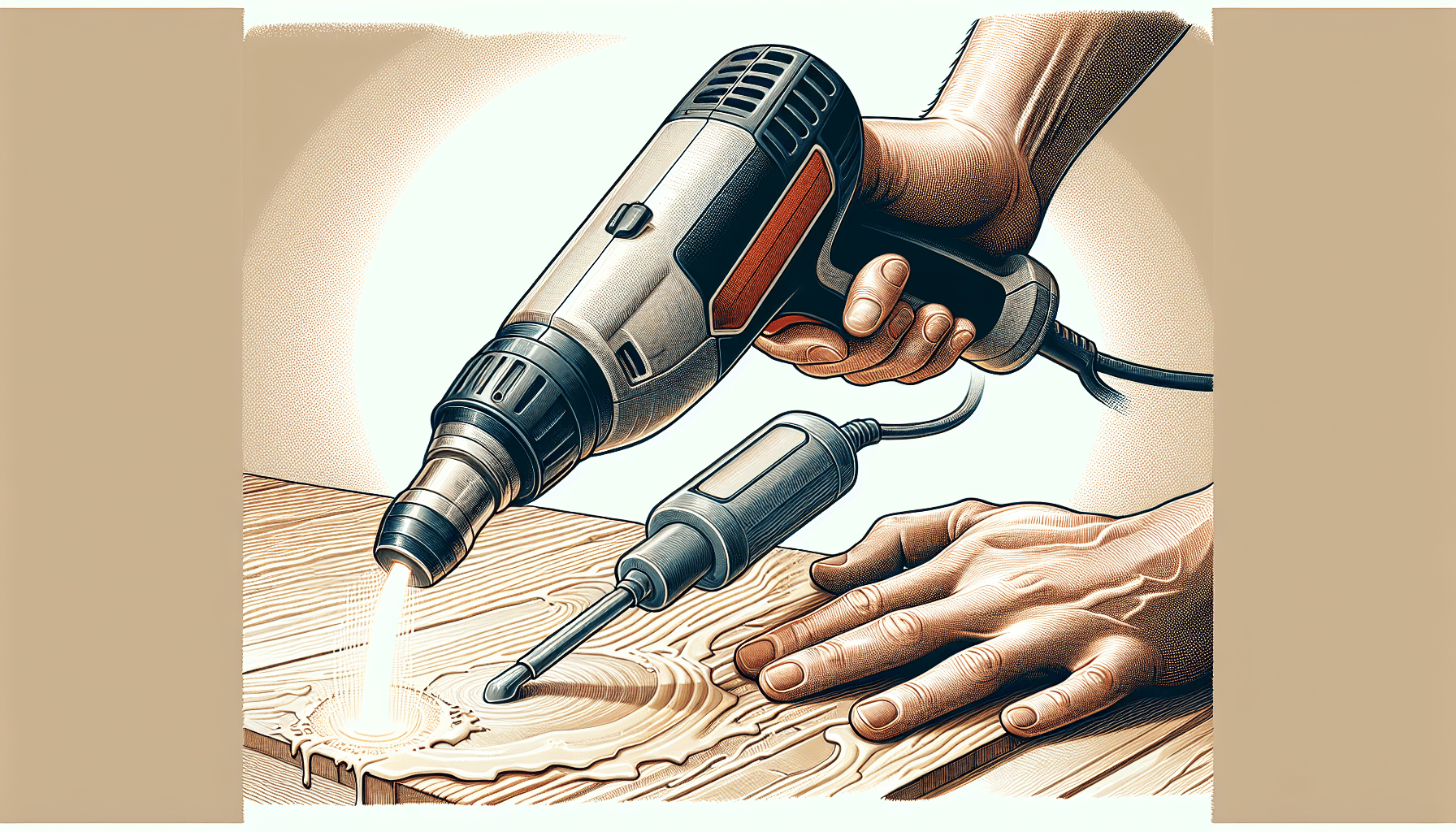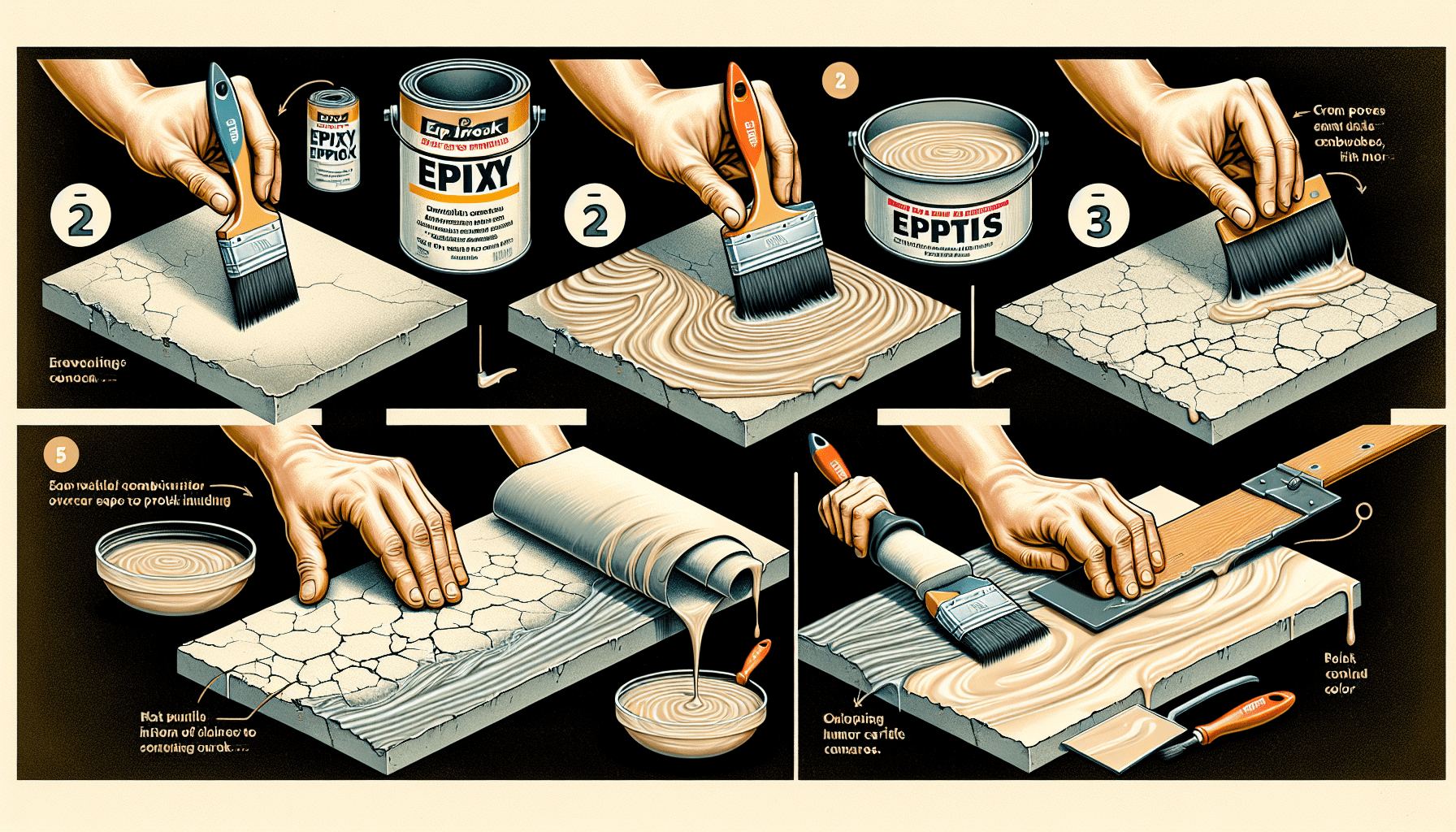Have you ever found yourself in the daunting task of removing epoxy paint from a surface? stripping epoxy paint can be a challenging and time-consuming endeavor, requiring a systematic approach to achieve desired results. In this article, we will guide you through the step-by-step process of effectively and efficiently removing epoxy paint, allowing you to restore the surface to its original state. Whether you are dealing with a small project or a larger industrial application, these proven methods and techniques will save you valuable time and effort. So, let us dive straight into the world of epoxy paint removal and equip you with the knowledge you need to successfully strip away this durable coating.

Understanding Epoxy Paint
Epoxy paint is a type of paint that is composed of epoxy resin and a hardener. When these two components are mixed together, a chemical reaction occurs that results in a tough and durable finish. Epoxy paint is known for its excellent adhesion, resistance to chemicals and moisture, and its ability to withstand heavy traffic and wear. It is commonly used in industrial and commercial settings, but can also be used in residential applications.
What is epoxy paint?
Epoxy paint is a two-part coating that consists of epoxy resin and a hardener. The epoxy resin is a viscous liquid that provides adhesion and durability, while the hardener is a catalyst that initiates the curing process. When these two components are mixed together in the appropriate ratio, a chemical reaction occurs that causes the epoxy paint to harden and form a protective coating. This curing process can take anywhere from a few hours to several days, depending on the specific product and environmental conditions.
Why is epoxy paint used?
There are several reasons why epoxy paint is commonly used in various applications. Firstly, epoxy paint offers exceptional durability and can withstand heavy traffic, making it suitable for high-traffic areas such as warehouses and industrial facilities. It is also resistant to chemicals and moisture, which makes it a popular choice for areas where spills or exposure to harsh substances is a concern. Additionally, epoxy paint provides excellent adhesion to a wide range of surfaces, including concrete, metal, and wood. This versatility makes it a preferred choice for many different projects.
Where is epoxy paint commonly used?
Epoxy paint is commonly used in industrial and commercial settings due to its durability and resistance to chemicals and moisture. It is often used to coat concrete floors in warehouses, factories, and garages, as it provides a strong and seamless finish that can withstand heavy machinery and foot traffic. Epoxy paint is also used in automotive and aerospace industries to protect metal surfaces from corrosion and wear. In residential settings, epoxy paint can be used to coat garage floors, countertops, and other surfaces that require a tough and durable finish.
Preparing for Stripping
Before you begin the process of stripping epoxy paint, it is important to gather all the necessary supplies. This includes safety equipment such as gloves, goggles, and a respirator to protect yourself from the fumes and chemicals involved in the stripping process. Additionally, you will need sandpaper or sanding discs, a wire brush, a paint scraper, an appropriate paint stripper, and a heat gun or blowtorch if necessary.
In order to ensure safety during the stripping process, it is important to take certain precautions. Make sure to work in a well-ventilated area or use a respiratory mask to avoid inhaling any fumes. It is also recommended to wear protective clothing, such as long sleeves and pants, to prevent skin contact with the stripper or epoxy paint. Lastly, make sure to keep any open flames or heat sources away from the stripping area to avoid any potential fire hazards.
To protect the surrounding surfaces from damage or staining, it is advisable to cover them with drop cloths or plastic sheeting. This will help prevent any accidental spills or splatters from coming into contact with surfaces that you do not want to strip or damage.
Mechanical Methods of Stripping
One of the mechanical methods that can be used to strip epoxy paint is using sandpaper or sanding discs. This method involves manually sanding the epoxy paint off the surface using coarse-grit sandpaper or sanding discs. This process can be time-consuming and labor-intensive, especially for larger surfaces, but it is effective in removing the paint layer by layer.
Another mechanical method is utilizing a wire brush. A wire brush can be used to scrub away the epoxy paint by applying pressure and using repetitive back-and-forth motions. This method is commonly used for smaller or intricate surfaces where sanding may not be as effective.
Using a paint scraper is another mechanical method that can be employed to strip epoxy paint. A paint scraper can be used to gently scrape away the paint layer by layer. It is important to be careful when using a paint scraper to avoid damaging the underlying surface.

Chemical Methods of Stripping
When using chemical methods to strip epoxy paint, it is important to select an appropriate paint stripper. There are various types of paint strippers available, including those specifically designed for epoxy paint removal. It is recommended to follow the manufacturer’s instructions and safety precautions when selecting and using a paint stripper.
To apply the paint stripper, it is important to wear protective gloves and goggles to prevent any splashes or contact with the skin. Apply the paint stripper evenly onto the epoxy paint surface using a brush or roller, ensuring complete coverage. It is important to allow the stripper to penetrate the paint for the recommended period of time as indicated by the manufacturer.
After the paint stripper has had enough time to dissolve the epoxy paint, use a paint scraper or wire brush to gently remove the softened paint. It is important to work in small sections and continuously clean off the paint scraper or brush to ensure effective removal of the epoxy paint. Once the majority of the paint has been removed, use a clean rag or sponge soaked in a paint thinner to clean any remaining residue.
Implementing Heat for Stripping
Using a heat gun is one method that can be employed to strip epoxy paint. A heat gun generates hot air that can soften the epoxy paint, making it easier to remove. It is important to keep the heat gun moving and to avoid concentrating heat on one area for too long to prevent damage to the underlying surface.
For thicker layers of epoxy paint or stubborn areas, a blowtorch can be used to apply heat. It is crucial to exercise extreme caution when using a blowtorch, as it produces an open flame that can be a fire hazard. Keep the blowtorch moving at all times and do not apply direct heat to the surface for an extended period of time.
Using Sandblasting for Stripping
Sandblasting is a highly effective method of stripping epoxy paint from various surfaces. This process involves propelling fine particles of abrasive material, such as sand or glass beads, at a high velocity onto the paint surface. The abrasive particles remove the epoxy paint by chipping away at it, leaving behind a clean surface.
To sandblast epoxy paint, it is important to first understand the process and ensure proper equipment is used. Sandblasting should only be performed by trained professionals who are familiar with the equipment and safety precautions to avoid injury or damage to the surface being stripped.
To prevent damage to the surface, it is important to choose the appropriate abrasive material and adjust the pressure and flow rate accordingly. It is also advisable to test a small area before proceeding with the entire surface to ensure the desired results are achieved without causing any damage.
Stripping Epoxy from Different Surfaces
The process of stripping epoxy paint can vary depending on the surface it is applied to. When stripping epoxy paint from wood, it is important to be cautious not to damage the wood surface. Mechanical methods such as sanding or using a paint scraper can be effective in removing the epoxy paint. However, it is important to sand in the direction of the wood grain to avoid any scratches or gouges. Additionally, using a gentle paint stripper that is suitable for use on wood surfaces can help dissolve and remove the epoxy paint.
When stripping epoxy paint from concrete, mechanical methods such as sanding or using a wire brush are commonly used. It is important to avoid using sandblasting on concrete surfaces, as it can cause damage or pitting. Chemical methods can also be employed, but it is crucial to use a paint stripper that is specifically formulated for use on concrete to avoid any adverse effects.
Stripping epoxy paint from metal surfaces can be done using a combination of mechanical and chemical methods. Sanding or using a wire brush can effectively remove the epoxy paint, and a paint stripper can be used to dissolve any remaining residue. It is important to choose a paint stripper that is safe for use on metal surfaces and to thoroughly clean and dry the metal after stripping to prevent any corrosion.
Cleaning and Prepping the Surface
After the epoxy paint has been successfully stripped, it is important to thoroughly clean and prep the surface before applying any new coatings or finishes. Use a clean rag or sponge soaked in a solvent or paint thinner to remove any residue or debris that may be left behind. This will ensure a clean and smooth surface for the next step.
Sand the surface lightly using fine-grit sandpaper to smooth out any rough areas or imperfections. This will promote better adhesion of any new coatings or finishes that will be applied. Make sure to clean off any dust or debris resulting from sanding.
Before applying a new paint or finish, it is advisable to apply a primer to the stripped surface. A primer will help improve adhesion and enhance the durability of the new coating. Follow the manufacturer’s instructions for the specific primer product being used, including application method and curing time.
Safety Considerations
When stripping epoxy paint, it is important to prioritize safety at all times. This includes wearing appropriate protective gear such as gloves, goggles, and a respirator. These safety measures will help protect against any fumes, chemicals, or particles that may be released during the stripping process. It is also important to work in a well-ventilated area, or use additional ventilation equipment, to prevent the buildup of fumes.
Proper disposal of the stripped paint and any materials used during the stripping process is essential. Check with local regulations and guidelines for proper disposal methods in your area. This can help prevent any negative environmental impact and ensure compliance with regulations.
Finishing Touches
After the epoxy paint has been stripped, and the surface has been cleaned and prepped, it is time to apply a new paint or finish. Select a high-quality paint or finish that is suitable for the specific surface and intended use. Follow the manufacturer’s instructions for proper application and curing times.
Allow the newly applied paint or finish to cure for the recommended period of time before subjecting the surface to any heavy use or traffic. This will ensure proper adhesion and durability of the coating. Avoid placing any objects or furniture on the newly finished surface until it has fully cured.
To maintain the surface and extend the life of the new paint or finish, regular cleaning and maintenance is important. Follow proper cleaning procedures and avoid using harsh chemicals or abrasive materials that could damage the surface. Regular inspections and touch-ups, if necessary, can help address any minor issues before they become major problems.
In conclusion, understanding the process of stripping epoxy paint is crucial for anyone looking to remove this durable coating from various surfaces. Whether you choose mechanical methods such as sanding or using a paint scraper, chemical methods with a suitable paint stripper, implementing heat with a heat gun or blowtorch, or utilizing sandblasting, it is important to follow safety precautions and select the appropriate method for the specific surface. Preparing the surface, cleaning and prepping after stripping, and applying a new paint or finish are essential steps to achieve a successful outcome. By following these steps and considering safety considerations, you can effectively strip epoxy paint and maintain the surface for years to come.



